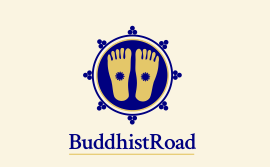Mountain God, Celestial God, and Kingship: The Non-Buddhist Tradition in Dunhuang Tibetan Documents

24 January 2024 - Yuewei Wang (Paris)
Mountain God, Celestial God, and Kingship: The Non-Buddhist Tradition in Dunhuang Tibetan Documents
online guest lecture at the BuddhistRoad project, CERES, Ruhr University Bochum
The Tibetan Dunhuang manuscripts from the 8th to 11th centuries are pivotal for understanding early Tibetan religions, centered around mountain god worship, seen as earthly manifestations of the celestial gods (Tib. lha). These divine celestial beings were thought to bestow divine rulership, deity systems, laws, and societal foundations upon humanity. The texts from Dunhuang (and other early Tibetan texts, such as Stod lha rabs) delineate three evolving relationships between celestial gods and mountain gods and the rulers:
- Tibetan pre-imperial period (up to ca. 600): Local rulers (Tib. rgyal po) revered mountain gods for safeguarding and as symbols of their rule.
- Tibetan imperial period (ca. 600–850): Mountain gods were personal deities (Tib. sku bla) of divine kings (Tib. btsan po), essential in royal ceremonies but also capable of forsaking kings. Subjugated rulers were compelled to honor the Tibetan king’s personal deity.
- Additionally, the renowned mountain gods of central Tibet, the nine mountain gods (Tib. lha dgu), were depicted as paternal relatives to the sacred Tibetan king, both descendants of the celestial Phyva class.
These narratives trace the mountain gods’ transformation from local guardians to divine relatives of the Tibetan sovereigns, mirroring the shifting political and power dynamics of the era. The study concentrates on two eminent Tibetan mountain gods, Tanglha yazhur (Tib. Thang lha ya bzhur) and Yarlha shampo (Tib. Yar lha sham po), exploring the ideological and regal facets of pre-Buddhist Tibet.


